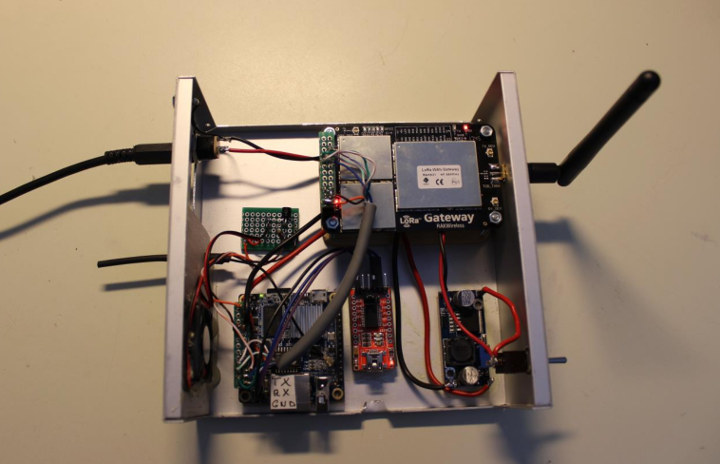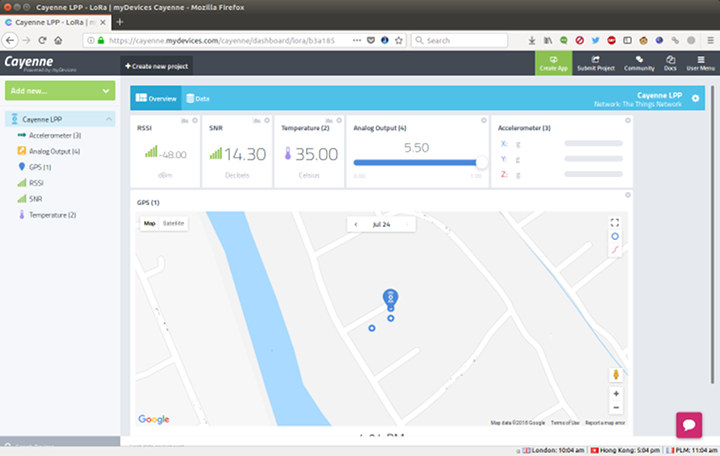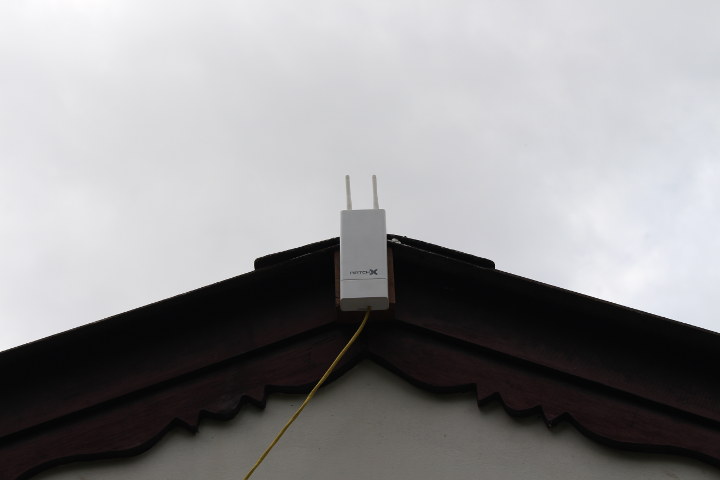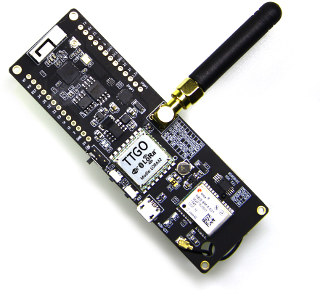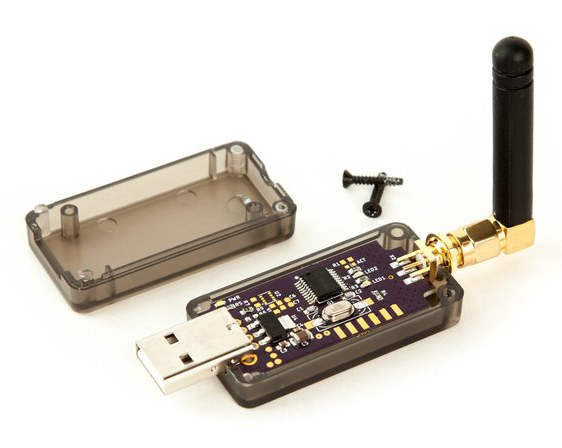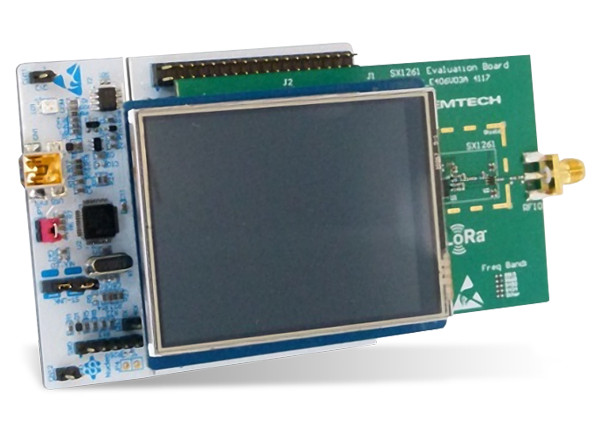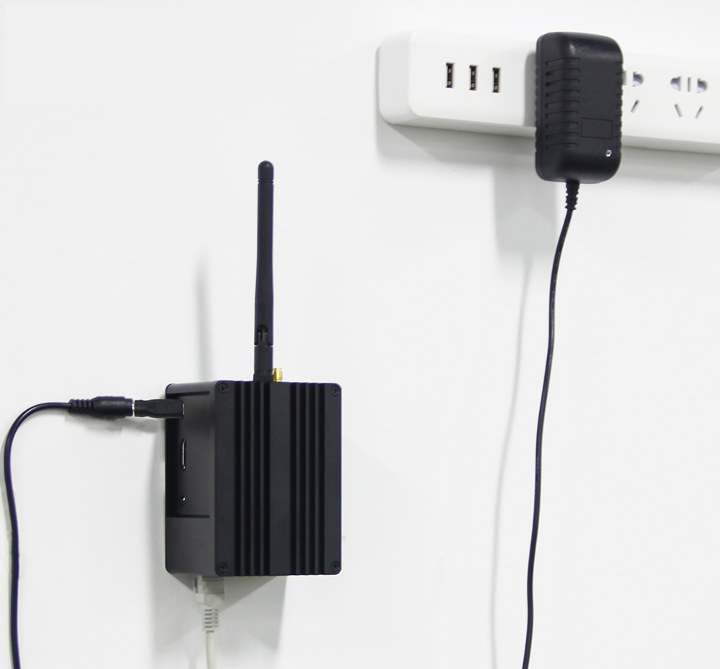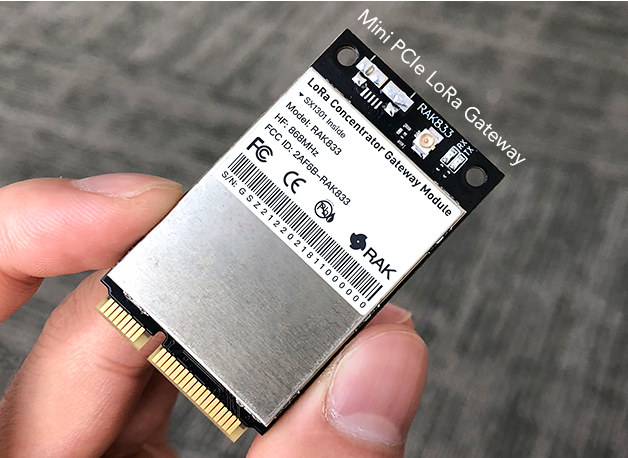LoRa gateways tend to be fairly expensive, especially because of the radio part, but anything that may help lower the cost is probably welcomed. And one way to to do that is to use dirt cheap boards like Orange Pi Zero as Edzelf did, by combining the low cost Arm Linux board ($15 shipped) with Rak wireless RAK831 concentrator module kit ($143) via a custom cable, and a power supply board. All assembled into a metal case. RAK831 communicates with Orange Pi Zero over an SPI connection. While some other Orange Pi boards are suitable for the project, note that Orange Pi Zero Plus lacks a spare SPI interface, and can’t be used with this particular application. A fan was also added for cooling, a well as a USB serial debug board for debugging purpose, but it can be removed once the gateway is in the field. Software-wise, Edzelf installed […]
AS923 LoRa GPS Tracking with MatchX MatchBox Gateway and RAK811 LoRa GPS Tracker Board
Earlier this month, I installed Match MatchBox LoRa outdoor gateway close to the roof, and showed how easy it was easies to setup with MatchX Cloud. Basically, you just register to the cloud, enter the serial number, and the gateway is automatically based on your location. I’m in South East Asia, so the gateway was configured with AS923. I’ve now had time to play with the gateway using Rak Wireless RAK811 LoRa tracker board, and eventually managed to get the tracker location to show up on a map. It was my first experience with LoRaWAN, and I had to learn a lot, and overcome many issues from outdated software development tools, different data formats, and some interoperability issues between all components involved. I’ll document all that in this review, and hopefully it will help others. RAK811 LoRa GPS Tracker Unboxing Before going into LoRa configuration, I’ll show what I got […]
MatchX MatchBox LoRa Gateway Setup (for AS923) and Installation
At the end of last year, I received MatchX Matchbox LoRaWAN gateway, but only quickly checked out the hardware, as I was still unclear about regulations in South East Asia, and did not have any nodes to play with. Understanding Regulations and LoRaWAN Frequency Plans Since then, the government published some notifications about the 920-925 MHz band we are supposed to follow here. It’s in Thai language, and I can’t still read/understand it, but I got some translation help, and some key points include: paragraph 5 : for 920-925MHz non-RFID radio equipment (1) max EIRP not more than 4 watts (2) if EIRP < 50mW, no need for any license (3) if EIRP < 500mW, a license is required for importing, selling, and making your own equipment (4), and you must be in accordance with NBTC technical standard. (5) must not interfere with any licensed application. Interfering equipment must be […]
Design ESP32 LoRa GPS Tracker Applications with TTGO T-Beam Board
TTGO introduced a small ESP32 LoRa board with OLED display last year that is still selling for around $14 shipped. But the company is now back with a similar board called TTGO T-Beam that does without the display, but adds GPS support, and a 18650 battery holder, so it should be ideally suited for all sorts of LoRa GPS tracking applications. TTGO T-Beam board specifications: SoC – Espressif ESP32 dual core Xtensa LX6 processor with WiFi and Bluetooth Memory – PSRAM Storage – 4MB SPI flash Connectivity 802.11 b/g/n WiFi up to 150 Mbps + Bluetooth 4.2 Classic and LE with “3D antenna” soldered on PCB LoRa 433, 868, and 915 MHz versions with SMA antenna Transmit current – 120 mA @ +20dBm; 90 mA @ +17dBm; 29mA @ +13dBm Receive sensitivity -139dBm with LoRa & 62.5Khz & SF=12 & 146bps -136dBm with LoRa & 125Khz & SF=12 & 293bps […]
LoStik USB Dongle Adds LoRa Connectivity to any Computer or Linux Board (Crowdfunding)
We’ve covered plenty of hardware with LoRa radio from gateways, to Arduino shields, tracker boards, and mini PCIe cards, but after reading an article on Time4EE this morning, I realized we never wrote about any LoRa USB stick. LoStik – previoulsy LoRa Stick – is an open source hardware USB dongle based on Microchip RN2903 / RN2483 LoRa module, and offered on CrowdSupply for $39. LoStik specifications: USB – USB 2.0 port LoRa Connectivity Microchip RN2903 – 915 MHz for US, Canada, South America and Australia Microchip RN2483 – 868 Mhz for Europe Receiver Sensitivity – down to -146 dBm TX Power – adjustable up to +18.5 dBm Range – up to 15 km coverage in suburban and up to 5 km coverage in urban areas Misc – 2x user LEDs Power Consumption – 140 ma typical TX, 20 ma idle (with power LED) Dimensions – 80 mm x 25 […]
Semtech SX1261/SX1262 LoRa Development Kit Now Available for $305
Semtech announced SX1261, SX1262 and SX1268 LoRa chips in January as updates to their current LoRa solutions with a lower footprint, better efficiency, and even longer range. Mass production and development kits were expected in March 2018, and today I found out Semtech SX1261/SX1262 development kit is sold on Mouser for $305. The SX126xDVK1CAS kit comes with the following items: 2x SX126xMB1xAS RF modules including an ST Nucleo Mbed board and a touchscreen 2x Mini-USB / USB connection cables 2x 868/915MHz antennas 2x Mini-USB cables 2x touchscreen styluses Read-Me Note The SX1261/SX1262 LoRa Transceivers offer continuous frequency coverage from 150MHz to 960MHz. You’ll find information to get started in the user guide. Basically, the two boards will show a menu on the touchscreen with radio test modes, settings and utilities (e.g. firmware update) as well as two demos: DEMO Ping Pong performs a bidirectional range test between the two radio […]
RAK831 Lite is a $200 LoRa / LoRaWAN Gateway based on Raspberry Pi 3 Board
RAK831 is a Semtech SX1301 based LoRa gateway module that was released by RakWireless in 2017. The board has since then be sold as part of the company’s LoRa gateway developer kit with a Raspberry Pi and a MAX-7Q GPS Module. But now RakWireless offers a nicely packaged solution with Raspberry Pi 3 board, RAK831 module, a GPS board, an enclosure, antenna, and power supply which they call RAK831 Lite, and sells for just $199 + shipping ($6.45 extra here).RAK831 Lite gateway main components and specifications: Main board – Raspberry Pi 3 development board with Broadom BCM2837 processor, 1GB RAM, micro SD card slot, Fast Ethernet, 4x USB ports, HDMI output, audio jack Connectivity RAK831 LoRa Concentrator board based on SX1301 chipset RF frequencies – 433, 470, EU868, AS923, AU915, and US 915 Rx Sensitivity – -140 dBm Tx Power – Up to 25.5 dBm at settings 27 dBm SMA […]
RAK833 is an Industrial Grade mini PCIe LoRaWAN Gateway Card
The most obvious way to setup your own LoRAWAN network is to get an off-the-shelf Gateway such as MatchBox, which can be easily installed, and configured using the built-in web interface. But if you need something more flexible, Rakwireless RAK833 could be an interesting option, as an industrial grade LoRaWAN gateway that you can just insert into an advanced router or computer’s mini PCIe slot. RAK833 card specifications: LoRa Connectivity Semtech SX1301 Digital Baseband Chip for outdoor LoRaWAN macro gateways 2x Semtech SX1255/7 Tx/Rx front-end 49x LoRa demodulators, 10 parallel demodulation paths Frequencies – 433 MHz, 470 MHz, 868 MHz, and 915 MHz Tx Power – Up to 25 dBm Rx Sensitivity – -140 dBm Host Interface – 52-pin mPCIe edge connector with USB and SPI (via FT2232H) signals; Supply Voltage – 3.3V compatible with 3G/LTE mPCIe cards Dimensions – 50.95 x 30 mm The card ships with an external […]


